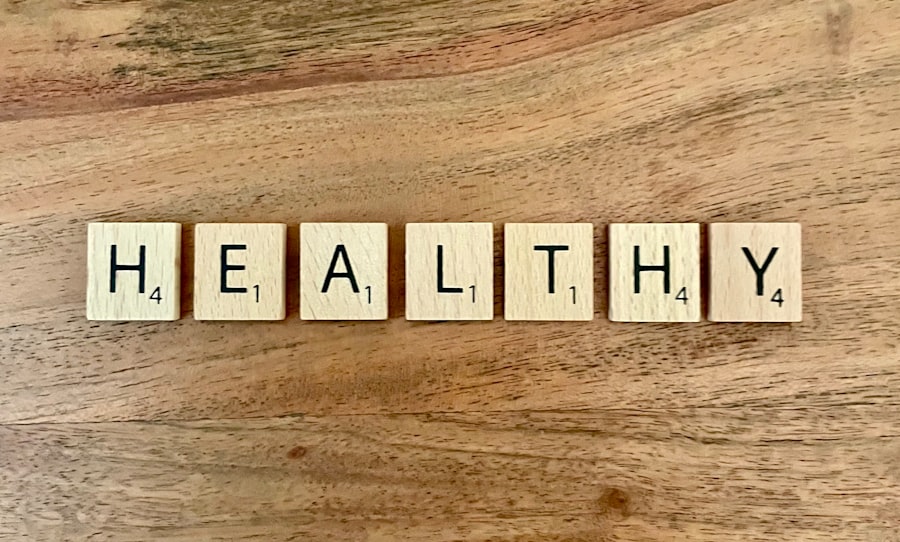Marketing plays a pivotal role in the health sector, serving as a bridge between healthcare providers and the communities they serve. The importance of marketing in health cannot be overstated; it is essential for raising awareness about health issues, promoting services, and educating the public on preventive measures. In an era where information is abundant yet often misleading, effective marketing strategies can help disseminate accurate health information, guiding individuals toward healthier choices.
For instance, campaigns that focus on vaccination awareness have proven to be instrumental in increasing immunization rates, thereby reducing the incidence of preventable diseases. Moreover, marketing in health is not solely about promoting services; it also encompasses building trust and credibility within communities. Health organizations that engage in transparent communication and provide valuable resources are more likely to foster strong relationships with their audience.
This trust is crucial, especially when addressing sensitive topics such as mental health or chronic illnesses. By employing targeted marketing strategies, health organizations can reach specific demographics, ensuring that their messages resonate with those who need them most. This tailored approach not only enhances the effectiveness of health campaigns but also empowers individuals to take charge of their health.
Key Takeaways
- Effective health marketing is crucial for raising awareness and promoting wellness.
- Social media and influencer partnerships amplify health campaign reach and engagement.
- Creating educational and inspiring content drives audience connection and action.
- SEO and visual marketing enhance visibility and appeal of health-related messages.
- Analyzing campaign data ensures continuous improvement and success measurement.
Utilizing Social Media to Promote Health and Wellness
Social media has revolutionized the way health information is shared and consumed. Platforms like Facebook, Instagram, Twitter, and TikTok have become vital tools for health promotion, allowing organizations to reach vast audiences with minimal cost. The interactive nature of social media enables real-time engagement, fostering a sense of community among users.
Health organizations can utilize these platforms to share informative content, such as tips for healthy living, updates on new research findings, or announcements about local health events. For example, during the COVID-19 pandemic, many health departments effectively used social media to disseminate critical information about safety protocols and vaccination availability. Additionally, social media allows for targeted advertising, enabling health organizations to reach specific demographics based on age, location, interests, and behaviors.
This precision ensures that messages are delivered to those who are most likely to benefit from them. Campaigns that encourage healthy behaviors—such as smoking cessation or increased physical activity—can be tailored to resonate with particular groups, enhancing their impact. Furthermore, the shareability of social media content means that users can easily spread important health messages within their networks, amplifying the reach of campaigns and fostering a culture of wellness.
Creating Engaging Content to Educate and Inspire

Content creation is at the heart of effective health marketing. Engaging content not only captures attention but also educates and inspires individuals to take action regarding their health. Health organizations must prioritize creating high-quality content that is both informative and relatable.
This can include blog posts, videos, infographics, and podcasts that address various health topics in an accessible manner. For instance, a series of short videos demonstrating simple exercises can motivate individuals to incorporate physical activity into their daily routines. Moreover, storytelling is a powerful tool in health marketing.
By sharing personal stories of individuals who have overcome health challenges or achieved significant lifestyle changes, organizations can create emotional connections with their audience. These narratives can inspire others to embark on their own health journeys. For example, a campaign featuring testimonials from cancer survivors can provide hope and encouragement to those currently facing similar battles.
By combining factual information with compelling stories, health organizations can create a more profound impact on their audience.
Leveraging Influencer Partnerships for Health Campaigns
| Metric | Description | Example Value | Importance |
|---|---|---|---|
| Reach | Total number of unique individuals exposed to the campaign through influencer posts | 500,000 | High – Determines potential audience size |
| Engagement Rate | Percentage of audience interacting with content (likes, comments, shares) | 7.5% | High – Indicates audience interest and interaction |
| Conversion Rate | Percentage of audience taking desired action (e.g., signing up, downloading resources) | 3.2% | High – Measures campaign effectiveness |
| Cost per Engagement | Average cost incurred for each engagement generated | 2.50 | Medium – Helps optimize budget allocation |
| Audience Demographics | Breakdown of audience by age, gender, location relevant to health campaign goals | 18-34 years: 65%, Female: 60%, Urban: 70% | High – Ensures targeting aligns with campaign objectives |
| Message Recall | Percentage of audience who remember the campaign message after exposure | 45% | Medium – Reflects message retention |
| Sentiment Analysis | Ratio of positive to negative mentions related to the campaign | Positive: 80%, Negative: 5%, Neutral: 15% | High – Assesses public perception |
Influencer marketing has emerged as a significant strategy in promoting health and wellness initiatives. Influencers—individuals with substantial followings on social media—can effectively reach target audiences and lend credibility to health campaigns. Collaborating with influencers who align with an organization’s values can amplify messages and foster trust among followers.
For instance, a fitness influencer partnering with a nutrition brand can promote healthy eating habits while demonstrating how to incorporate those habits into an active lifestyle. The authenticity that influencers bring to their endorsements is crucial in the health sector. Audiences are more likely to trust recommendations from individuals they admire rather than traditional advertisements.
This trust can lead to increased engagement and participation in health campaigns. For example, during Mental Health Awareness Month, mental health advocates on social media can share resources and personal experiences that resonate with their followers, encouraging open discussions about mental well-being. By leveraging influencer partnerships strategically, health organizations can enhance their outreach efforts and create meaningful connections with diverse audiences.
Implementing Email Marketing for Health Promotion
Email marketing remains one of the most effective tools for engaging audiences in the health sector. It allows organizations to communicate directly with individuals who have expressed interest in their services or information. By building a robust email list through sign-ups on websites or during events, health organizations can deliver tailored content that meets the specific needs of their audience.
Regular newsletters featuring articles on health tips, upcoming events, or new services can keep subscribers informed and engaged. Personalization is key in email marketing; addressing recipients by name and segmenting lists based on interests or demographics can significantly enhance engagement rates. For instance, a healthcare provider might send different content to patients managing chronic conditions compared to those seeking preventive care information.
Additionally, incorporating calls-to-action (CTAs) within emails encourages recipients to take specific actions—whether it’s scheduling an appointment, signing up for a workshop, or participating in a community event. By utilizing email marketing effectively, health organizations can nurture relationships with their audience and promote ongoing engagement.
Utilizing SEO and Keywords for Health-related Content

Search Engine Optimization (SEO) is a critical component of digital marketing that helps health organizations increase their online visibility. By optimizing content for search engines, organizations can ensure that their information reaches individuals actively seeking health-related topics. This involves researching relevant keywords that potential patients or clients are likely to use when searching for information online.
For example, a local clinic might focus on keywords such as “pediatric care” or “chronic pain management” to attract individuals looking for specific services. Incorporating these keywords naturally into website content, blog posts, and social media updates enhances the likelihood of appearing in search engine results pages (SERPs). Additionally, creating high-quality content that answers common questions or addresses prevalent health concerns can position an organization as an authority in its field.
For instance, a blog post detailing the benefits of regular exercise for mental health not only provides valuable information but also improves SEO rankings when optimized correctly. By prioritizing SEO strategies, health organizations can increase their online presence and connect with individuals seeking reliable health information.
Maximizing the Power of Visual Marketing for Health
Visual marketing is an essential aspect of effective health communication. Humans are inherently visual creatures; compelling images and videos can convey messages more powerfully than text alone. In the context of health marketing, visuals can be used to illustrate complex concepts or demonstrate healthy behaviors in an engaging manner.
Infographics summarizing key statistics about disease prevention or visually appealing videos showcasing healthy recipes can capture attention and enhance understanding. Moreover, visual content is highly shareable on social media platforms, increasing the potential reach of health campaigns. For instance, a visually striking infographic about the benefits of hydration can be easily shared by users across various platforms, spreading awareness about the importance of drinking water.
Additionally, incorporating visuals into email marketing campaigns can improve click-through rates; emails featuring images tend to perform better than those without any visual elements. By maximizing the power of visual marketing, health organizations can create memorable campaigns that resonate with their audience.
Measuring and Analyzing the Success of Health Marketing Campaigns
To ensure the effectiveness of health marketing efforts, it is crucial to measure and analyze campaign performance regularly. Various metrics can provide insights into how well campaigns are resonating with audiences and achieving desired outcomes. Key performance indicators (KPIs) such as engagement rates on social media posts, open rates for email newsletters, website traffic analytics, and conversion rates from specific campaigns offer valuable data for evaluation.
Utilizing tools like Google Analytics allows organizations to track user behavior on their websites—identifying which pages are most visited and where users are dropping off in the conversion process. This data can inform future marketing strategies by highlighting areas for improvement or adjustment. Additionally, conducting surveys or gathering feedback from participants in health programs can provide qualitative insights into audience perceptions and preferences.
By continuously measuring and analyzing campaign success, health organizations can refine their strategies over time, ensuring that they remain relevant and effective in promoting public health initiatives.



